Different kinds of trees grow naturally in different parts of the world. Where they grow depends mainly on climate. Look closely at trees in winter, and you will see that even deciduous trees in winter and you will see that even deciduous trees are not completely bare. Each twig has buds along its sides and at the trip. Buds have protective skins with tiny immature leaves and stems curled up inside. When spring sunshine warms the trees, buds begin to grow and swell. Finally, they burst open and small leaves emerge. Leaves contain pipes called veins, making the leaves stiffen and flatten as they grow to full size.
To learn about trees, you can make a collection of dead leaves, cones, and bark from each one you study. Do not forget to look for things throughout the year – flowers and buds in spring, seeds and fruit in the fall. Label your collection.
COLLECTING SPECIMENS
YOU WILL NEED
Tree specimens (leaves, cones, bark chips), heavy books, kitchen paper, glue, notebook, field guide, magnifying glass, shoe box, pieces of card.
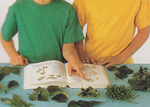
STEP 1
How many different leaves and cones can you find? Make sure you note down the name of the tree that each specimen comes from. Start a collection with your friends.
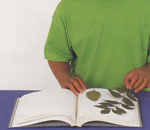 STEP 2
STEP 2
To dry and flatten your leaves, place sheets of kitchen paper between the pages of a large and heavy book. Lay your leaves out on the paper on one side only. Close the book.
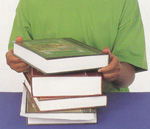 STEP 3
STEP 3
Pile more books on top. Make sure the pile cannot topple over and will not get disturbed. The weight presses the leaves flat, and the kitchen paper absorbs moisture.
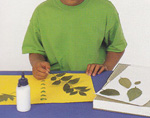 STEP 4
STEP 4
Wait for at least one month, until the leaves are flat and dry. Glue them into your notebook, or onto sheets of thick paper, and make them into a book. Use a field guide to identify each leaf.
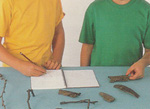 STEP 5
STEP 5
For bark specimens, only collect bark from dead trees that have fallen over. You can make bark rubbings from living trees.
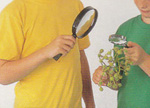 STEP 6
STEP 6
Springtime flowers soon wither and die. These young horse chestnuts will last much longer. It is better to take photographs of flowers, rather than pick them.
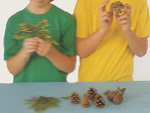 STEP 7
STEP 7
You can look at young cones and leaves from the lowest branches of evergreen pines, firs, and cedars. Look under these for cones that have fallen.
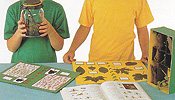
Make a large display case for your collection. You can make this from a shoe box by sticking in pieces of card to make compartments. Pressed leaves keep their shape and can last for a long time, if they are kept dry.
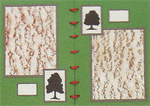
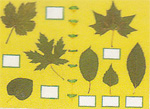
Back to School Projects Main

